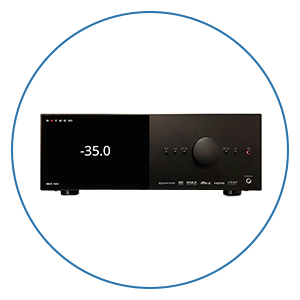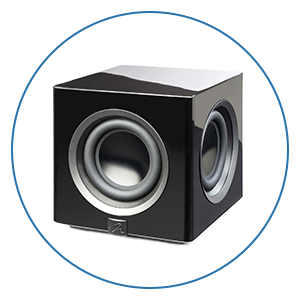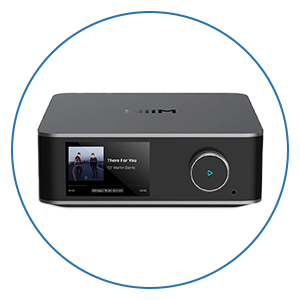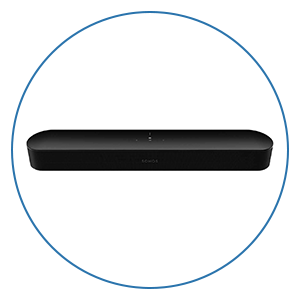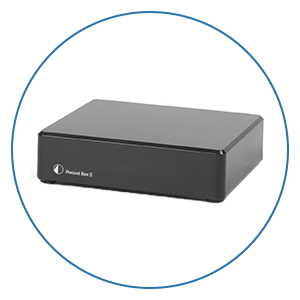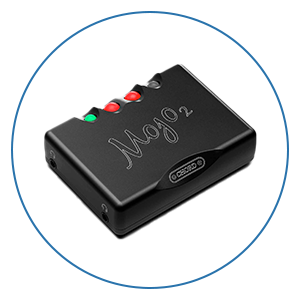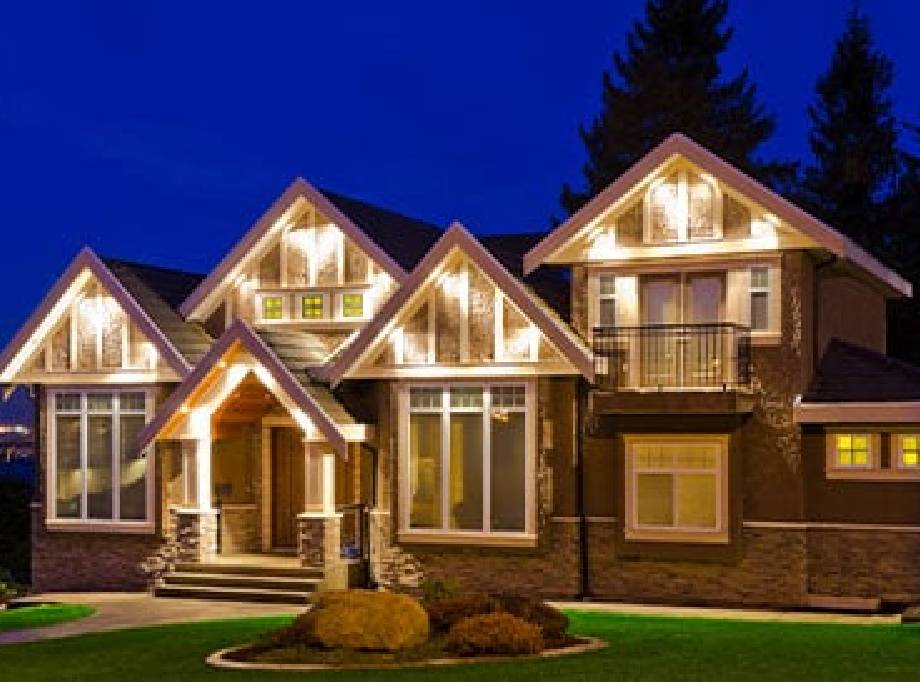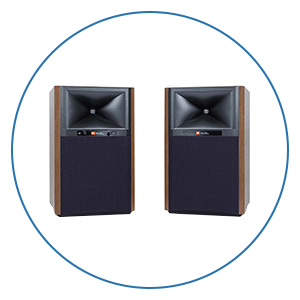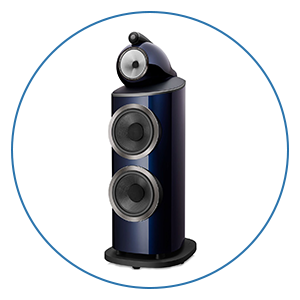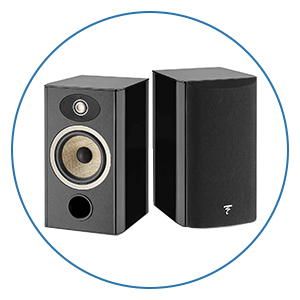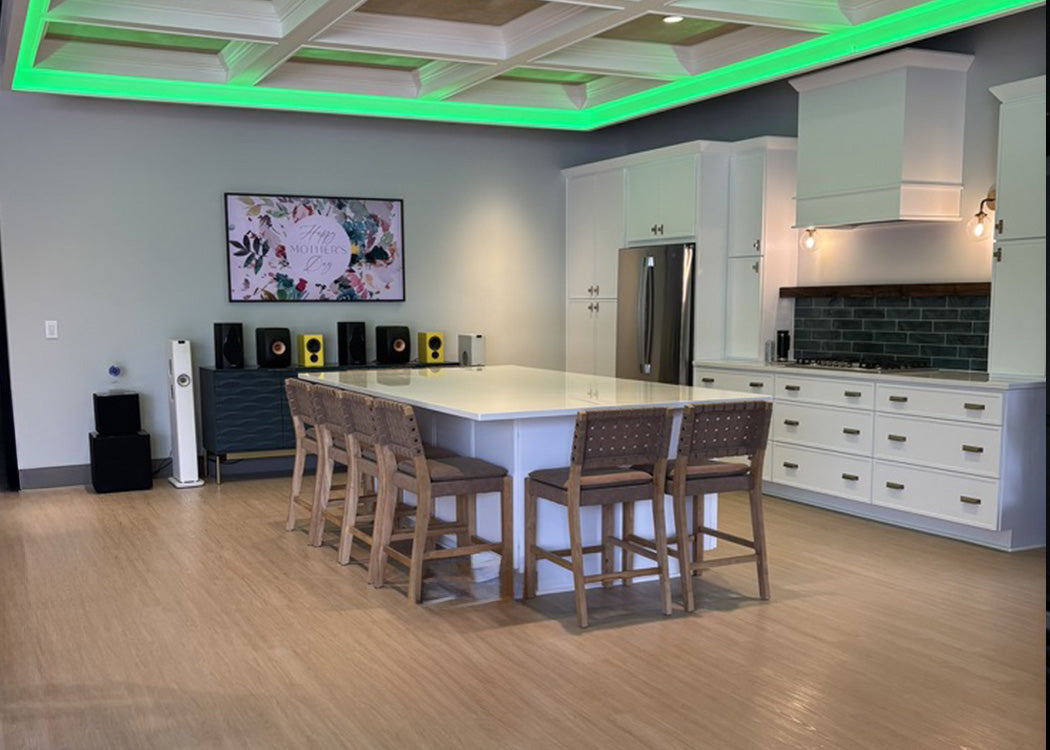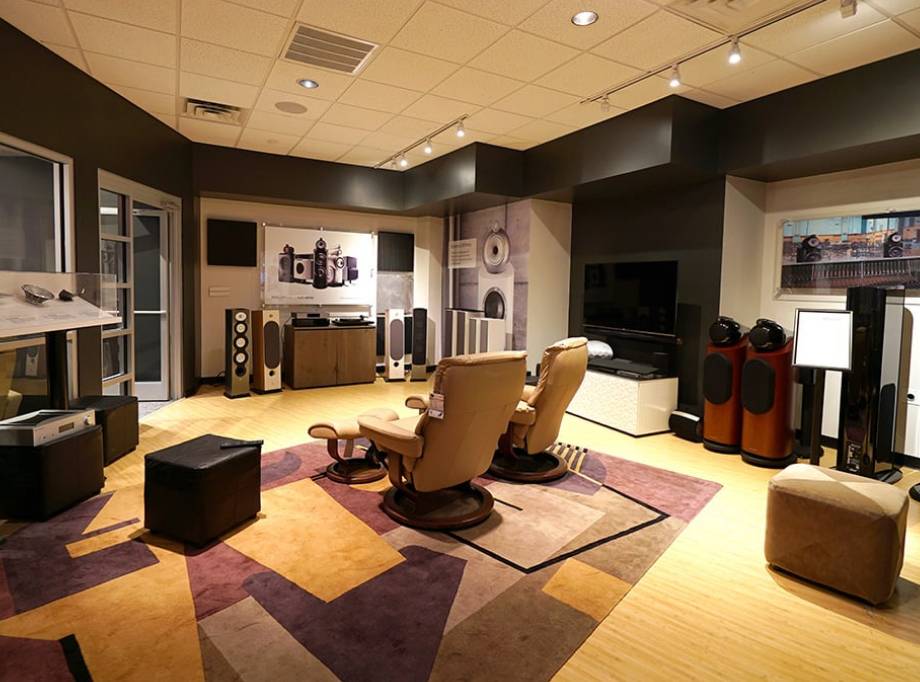How Surround Sound Evolved Into Dolby Atmos Technology

Ever since we started combining our TV’s with our speakers a few decades ago, surround sound systems have been moving forward. Today’s producers pay more attention than ever to the audio soundtrack of a film and if you have a great home theater system, you can easily hear how much better things have gotten since the early days of home theater. Surround sound formats have advanced so much over the years, we thought it would be fun to look back at how it all got started which does help give us some insight on where things might be going in the future.
The First Stereo Broadcast
The year was 1984, Miami Vice was the first television show to be broadcast in stereo. You needed a stereo VCR, an amplifier, and a pair of speakers to listen to it. The improvement in sound from the tiny speaker inside the 20-27” TVs of the time was simply amazing.
Dolby Pro Logic
The industry soon figured out that with all that great sound, it was harder to understand what the characters were saying on the screen. With just two speakers, the dialog was getting blended into the left and right speakers along with the music and special effects. Dolby Laboratories came to the rescue with Dolby Pro Logic and the addition of a center channel speaker and two surround speakers.
Their process took anything mixed in mono (which was always the dialogue track) and sent it out to the center speaker. Dolby Pro Logic also extracted some ambient effects from the left and right tracks that became the surround channels. As a result, 5 channel surround was born. Bear in mind, these 5 channels were all being interpreted from a basic stereo audio mix.
Dolby Digital
Then along came Dolby Digital. This was a huge breakthrough because each speaker was assigned a channel. We finally had a discrete 5.1 channel system! Surround sound no longer relied on guessing; the actual information was there. Dolby Digital allowed the producer of the audio track to assign sounds to each channel and balance how much went where.
This greatly helped surround effects become more immersive as the engineer had the freedom to mix say 20% to the front and 80% to the back on one effect, and possibly 50/50 on another, enabling sounds to travel from front to back in our rooms. Other audio formats evolved, including DTS, TrueHD, and DTS HD Master Audio, which all relied on the individual channel technology.

Dolby Atmos
This brings us to the present day and Dolby Atmos. Are you starting to notice a common name in all of these? Yes, Dolby Laboratories has played a huge role in advancing home theater technology over the years. Dolby Atmos is as big a jump forward, if not more, than Dolby Digital. With Dolby Digital, the engineers just basically have a front to back and left to right fader to assign sounds with. What if your room could be mapped as a three-dimensional cube and the engineer could assign sounds to appear at any exact location?
Dolby Atmos was originally designed for large commercial cinemas with up to 128 discrete channels. A typical Dolby Atmos home setup will have fewer channels but still provide you with an incredible experience. With object-based sound mapping today, engineers can literally make it sound like a fly is buzzing around your head or give you the sensation of raindrops falling on top of you. For most homes, a full-blown Dolby Atmos system will consist of the left and right speakers, the center channel, a pair of surround speakers, a pair of rear speakers, and 4 Atmos speakers.
The idea with Dolby Atmos is to surround the main seating area with speakers. The speaker layouts and positions are also different than what we strove for with Dolby Digital. With Dolby Digital, in order to add some height to the sound, the surround and rear speakers might be positioned higher or in the ceiling to add that sense of height. For Dolby Atmos, we want our surround speakers on each side of the main seats at ear level. The rear speakers ideally should also be about ear level and behind the main seats. The Atmos speakers (sometimes called height speakers) which can either be in-ceiling overhead speakers or upward-firing Dolby Elevation speakers provide the sound from above.
This layout has sound coming from all around you at ear level and from above you from the height channel Atmos speakers. You are literally sitting inside a dome of sound coming from all around you and precisely located in space by the Atmos system. When a Dolby Atmos system is properly calibrated, the immersive effect you get on a great soundtrack will put a big smile on your face!
How Many Movies and TV Shows are in Dolby Atmos?
Ever since Disney’s Brave was released in June of 2012, most major movies have been done in Dolby Atmos. You can go to the professional theater site for Dolby Atmos here if you want to geek out and see all of them as we did. Plus this does not even cover all of the TV series now being done. There are hundreds and hundreds in a list that is growing every day. With Dolby Atmos offering such a great level of immersion, it is no wonder this wonderful new format is being fully adopted by the movie and TV industry.
What Do I Need To Experience Dolby Atmos?
Many people think they need to start their home theater system completely over to get all the benefits of Dolby Atmos. You actually do not have to change that many components as you already likely own most of the key parts. You will need a source such as an Apple TV, Roku Player, Nvidia Shield, or Amazon Fire device. And that old trusty Bluray player you have had around for years is fully capable of playing back Dolby Atmos Bluray discs.
From a hardware standpoint, you will need to upgrade your home theater receiver or processor to one that can decode Dolby Atmos. For a lot of people, it’s a good time anyway as there are tons of legacy pre 4K systems out there so you can knock out two things at once by upgrading to 4K video switching and adding Dolby Atmos decoding. This link will help you explore what to look for in a home theater receiver.
Dolby Atmos does use more speakers, than Dolby Digital which means you will want to add some in-ceiling or Atmos elevation type speakers to your system. Or if you already have some surround speakers in your ceiling, those might could be repurposed for Dolby Atmos speakers. If you want to play around with options, jump over to our Home Theater Designer. You could also chat with us to explore options.

Example of a 7.1.4 Dolby Atmos System
The whole idea of a home theater experience is to make you believe you are in the movie. With Dolby Atmos, the sound is just so incredible, and therefore gets us much closer to that elusive feeling of being right in the center of the action.
Another really great feature of a Dolby Atmos system is how it can upgrade all of your older non-Dolby Atmos content from all of those great movies you own or ones that are not full-blown Dolby Atmos. The Dolby Atmos system will take an incoming 5.1 signal and interpret where all of the channels should be used. With your dolby atmos enabled speaker system, this gives you sound far better than Dolby Digital ever could.
Currently, there are several versions of Dolby Atmos and the number of audio channels in the system. We go over all of your options for Dolby Atmos and the different speaker layouts in our home theater speaker layout article.
The Future
We see home versions of Dolby Atmos adding an even larger number of speakers as time goes on. For larger rooms, there will be speakers at ear level in between your main left and right and surround speakers. There will also be front height speakers found above your left and right speakers. And for larger rooms, 6 Atmos in-ceiling speakers will probably become the norm. Of course, this is six more channels than the current 7.4.1 system for a total of 17 powered channels! With that many amplifiers, this type of system will be limited to the larger receivers and separate components, but from what we have heard at trade shows, prepare to be even further amazed!
As you start to learn about your home theater options, you’ll need to make a decision in one of three directions. Do you go full blown Dolby Atmos now? Do you plan to enable it to be a future upgrade? Or, do you settle for a more basic surround sound with Dolby Digital?
The choice is up to you, but if you want to smile every time you watch a great movie, we feel you should definitely make the jump to Dolby Atmos! The great part about any good home theater setup is that it is very modular so with proper planning, you can start out with the basics and later upgrade to a full-blown Dolby Atmos system.

Great Speakers Last for Decades
When we look back at our decades of experience in home theater, you can also spot some trends that might help you in allocating your home theater budget. Historically, we have seen video technology advance at a far more rapid pace than audio. Speaker systems easily last 20 years or more, but a 20-year-old TV seems like a dinosaur. We also see speaker systems going up in price over time due to raw material costs, but video prices remain stable and even drop for better technology.
This means, at least to us, it makes sense to invest in speakers now and if you have to cut corners, do it on the video portion as history shows next year’s video products will be better and usually less expensive.
Summary
- Surround sound has progressed over the years from a simple system to Dolby Atmos which gives the audio engineers the ability to put you right in the action
- In most cases, it is fairly easy to add Dolby Atmos to an existing home theater system
- It makes sense to invest in good speakers as they tend to last for a lot longer than other components of home theater technology
We hope this brief overview gives you some good insight into the world of home theater surround sound and how it’s moving towards more involving sound!


